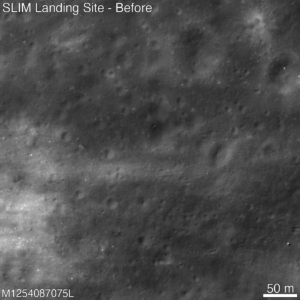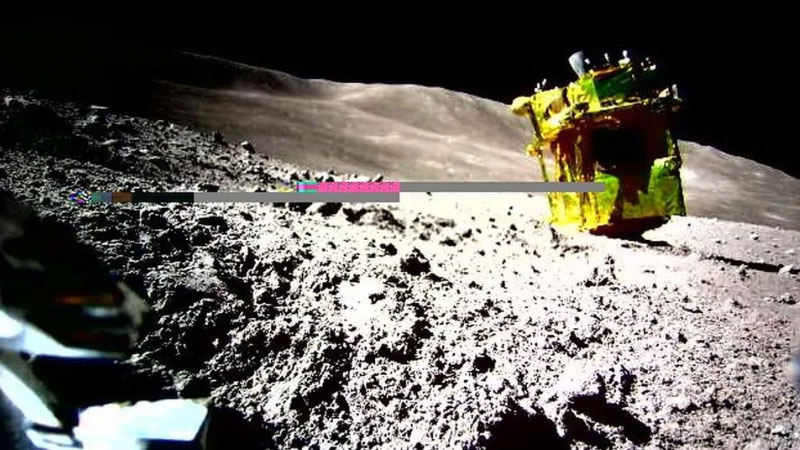SLIM, or Smart Lander for Lunar Exploration, is operated by the Japan Aerospace Exploration Agency (JAXA). It landed on the Moon on January 19 in a precision landing, making Japan the fifth country to perform a soft landing on the lunar surface, after India, China, the United States and Russia (then the Soviet Union). Five days later, NASA’s Lunar Reconnaissance Orbiter (LRO) spacecraft flew over the landing site and photographed SLIM.
From its orbit 50 miles (80 km) above the lunar surface, NASA’s Lunar Reconnaissance Orbiter (LRO) was able to see SLIM at the landing site. “The bright streaks on the left side of the image are rocky material ejected from the nearby, relatively young Scioli Crater,” NASA’s Goddard Space Flight Center, which manages LRO, said in a statement.
NASA images show the SLIM landing site both before and after the probe landed. One of the images is a composition in which elements that are identical to those in the images before and after landing have been removed. In turn, this allows us to see changes in the reflectivity of the lunar surface caused by exhaust from the lander’s engine.

SLIM accomplished its primary goal of landing at its chosen location with near pinpoint accuracy, landing within 328 feet (100 meters) of its target despite being upside down due to engine failure during descent. Due to its position, SLIM cannot use its solar panels to generate electricity, meaning the probe relies entirely on its battery. On Jan. 21, the lander’s battery capacity dropped to 12%, causing a power outage “to avoid failure to restart for the recovery operation due to over-discharge,” members of the SLIM team on X said.
However, JAXA scientists hope that if sunlight shines on the lander from the west of the Moon, SLIM’s solar panels will be able to absorb enough sunlight to generate power and recover. In addition to landing, SLIM was able to send two mini-rovers to the Moon, named LEV-1 (Lunar Excursion Vehicle 1) and LEV-2. Both work according to plan, and the spherical LEV-2 was even able to photograph its upside-down owner.





